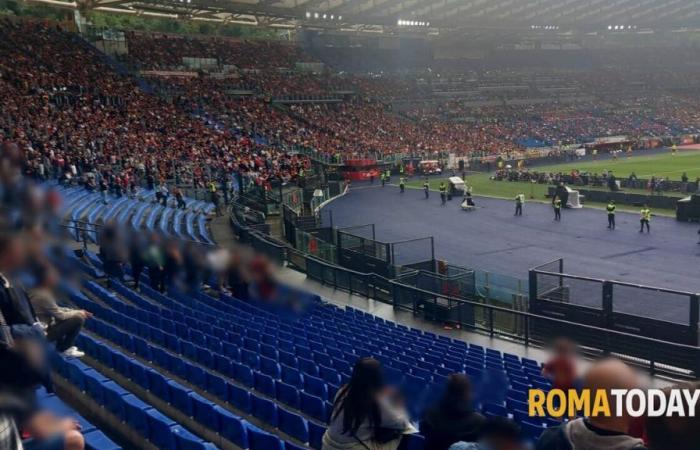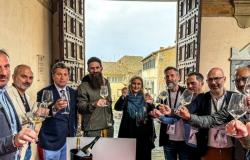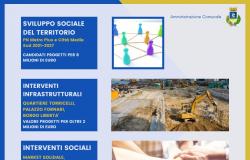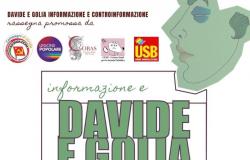They first removed the ‘patches’ and then abandoned the Curva Sud leaving the walls empty in protest. This happened on Monday 22 May at the Stadio Olimpico in Rome immediately after the kick-off of the match which saw Roma and Salernitana draw. Ninety minutes of celebration and support for the team – in view of the Europa League final scheduled for next May 31 in Budapest against Sevilla – which turned into a strong but peaceful protest, with the ultras of the yellow and red cheering sector being out of the Olympics. Reason? The ban by the Rome police headquarters on displaying a banner within the sector to commemorate the anniversary of the death of Roberto Rulli, historic founder of the Fedayn Rome.
Curva Sud: the map of Rome’s ultras groups, from neighborhoods to political beliefs
The Fedayn banner for Roberto Rulli
“19/05/23 To Roberto, we have lived in your legend honoring you every minute, even if he didn’t succeed… you watch over us and you will see that one day, in your name, we will still fight!”. This is the banner – several meters long – to which the police have forbidden entry to the Curva Sud. Words which, according to what we learn, evoked violent action in the final part, a fight in the name of the historic founder of the Fedayeen, who passed away on May 19, 1990.
Take off the banners from the Curva Sud
The entrance to the banner is forbidden from the walls where the ultras groups of Rome usually position themselves and the relative banners have been removed. “Patches” removed first in the South, then in the North, then in the separate areas and finally in all sectors of the stadium, including the Tiber grandstand. All without a banner as a sign of solidarity with the group located above the historic wall 17 which has always been occupied by the Fedayn Roma.
Curva Sud empty in protest
At 18:30, when the match kicked off, after the first chants, Sud stopped singing. Once the ‘pieces’ were collected, the organized groups left the sector inviting – whoever wanted to – to leave the plant with them. An exit while the South chanted the name of Roberto Rulli in chorus. A strong protest, with the lower part of the sector left empty, as well as the walls of the ultras groups and a good part of the upper part of the South too. Once out of the gates, the Roma ultras gathered outside the stadium, in front of what it is known as “The Ball”.
Banner open outside the South
Choirs and clapping, the groups first lit various smoke bombs – watched by the police in riot gear – singing chants for Roberto Rulli and the Fedayn Roma. Then they unrolled the banner that hadn’t been allowed into the sector to the cry of “Roberto Rulli”. A protest that also found support in the thousands of ultras from Salernitana present in the guest sector of the Olimpico who in turn sang a choir for the historic founder of the Fedayn and a chorus of support “Freedom for the ultras”. “We thank the Police Headquarters of Rome for having contributed to the publicity for the commemorative banner of Roberto Rulli – the post published by Lorenzo Contucci, the lawyer of reference for all the Italian ultras groups -. A clever strategy to cheer up and color the environment at the Stadium Olympic, deprived of its beating heart, which however showed its solidarity by removing its banners, from the Curva Sud to the Curva Nord, passing through Distinti and Tribuna Tevere”.
Curva Sud: the map of ultras groups, from neighborhoods to political beliefs
The Fedayeen and Roberto Rulli
A banner full of motivation for Roberto Rulli, who arrived on the first anniversary of the death of the founder of the Fedayeen for the first time after the theft of the banner of the ultras group of Quadraro-Don Bosco. Historic ultras group of the Curva Sud but also of the entire Italian and European scene, the Fedayn banner had last appeared in sector 20B of the Foro Italico facility on the occasion of the match won 2 to 0 by the Giallorossi in the evening against Empoli. That night – it was February 4th – in Piazza Mancini, the Fedayn Roma were in fact victims of an ambush by the Delije, ultras of Red Star Belgrade who were in Italy after attending the Serbian team’s basketball match in Milan. After the match the Fedayeen were literally assaulted unawares – by about fifty Slavic ultras armed with clubs and with their faces covered. The banners were then displayed and burned at the Marakana stadium in Belgrade during the Red Star-Cucaricki match, in the sector occupied by the Delije ultras.
The onslaught of Red Star fans
A raid outside any ultras dynamics, during which not only the banner of the Fedayeen was stolen, but also the historical patch “Roberto Rulli Brigade”, dedicated precisely to the historic founder of the Quadraro Firms.
The new banner on the Fedayeen wall
On the wall where the Fedayn have been positioned for over 50 years – the banner with the writing and the skull symbol of the group having remained bare – a new banner appeared on May 17th. A piece of Pompeian red edged in white and ocher yellow. No writing, just the banner.
Who was Roberto Rulli
Born on April 2, 1959 Roberto Rulli was the founder, at the age of 13, in 1972 of Fedayn Roma. With left-wing political connotations, the group was made up mostly of young people from Quadraro, Cinecittà and Don Bosco. He died at the age of 30, on May 19, 1990, since then every year the Fedayeen have remembered his figure on the anniversary of his disappearance. Newspapers and television news of the time often referred to the Fedayeen as a Palestinian liberation terrorist group. Rulli himself, in a 1977 interview with “Giallorossi” explained why that name was chosen: “We at Quadraro already five years ago every Sunday followed Roma. At ten o’clock we were in front of the stadium. The people who saw us for the road, at that time when our team was not doing very well, he gave us suicides, “Kamikaze” and told us “You are worse than the Fedayeen”. Since then we have liked this name that they had given us and we have kept it”.






